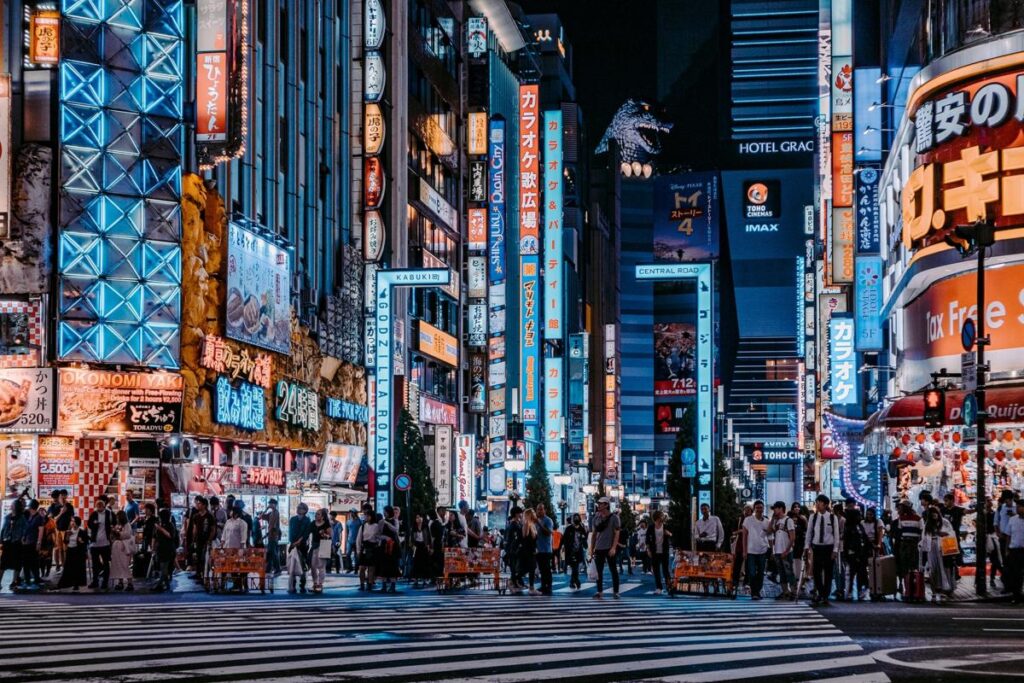This article is produced by National Geographic Traveler (United Kingdom).
There’s an undeniable enchantment to traveling in Japan; a bewitching magic wafts through the incense-filled mountain temples and deer-filled forests that perch above neon-lit cities. Even those who haven’t yet set foot on its shores are often captivated by it—and for good reason.
A large part of Japan’s uniqueness is that it rarely, if ever, disappoints. Its longitude and latitude make its natural environments remarkably diverse, which plays a large part in the country’s enduring appeal.
On the eastern side of Asia, the rocky fingers of the northernmost point, on the island of Hokkaido, almost touch Russia and the climate there is often similar to that of Siberia. On the western side of the island, the ski resorts of Niseko are considered to have some of the best powder snow in the world, while eastern Hokkaido experiences spectacular breaks each winter with the formation and flow of sea ice.
In the months when avid skiers navigate powder, Japan’s southern islands blush with sunshine and cherry blossoms, their blue-glass seas already warm. The same ocean current that makes the Philippines such a unique diving destination feeds the islands of Okinawa. Here, abundant coral reefs crackle with tropical fish and sea turtles, as well as whales, sharks and manta rays.
Add to this the jagged Ring of Fire—a highly active tectonic belt that long ago shaped Japan’s landscape and continues to reshape it with frequent earthquakes and eruptions—and the result is one of the most dynamic landscapes nature has to offer. Outdoor-focused trips abound with adventure, and travelers can river raft glacial streams, hike pilgrim trails, or cycle through rice paddies.
Culture also changes along the latitudes. The indigenous Ainu people of the north and the Ryukyu of Okinawa still have separate ethnic groups, but they are rarely what come to mind when you think of Japanese culture. The country is a giant of preserved traditions, kept secret and safe, thanks in large part to the Sakoku decrees of the 1630s that sealed it off from the outside world for more than two centuries. This isolationism left an indelible mark on the national psyche and culture. Precious rituals, traditional architecture, art and cuisine remained strong, particularly in the historic capital of Kyoto, while the world around Japan changed.
When the country reopened after 1853, Japan quickly adopted Western technology and ideas while developing its own. Thus began an era of zealous modernity — technology, skyscrapers, shinkansen bullet trains, cosplay, karaoke — embodied in great steel-and-glass metropolises like Tokyo and Osaka.
Today, travelers are greeted by a land of quiet aloofness and deafening pachinko pinball machines, a subtropical paradise of breathtaking mountain peaks, a place where monks share streets with steampunk vampires. Here, we explore two itineraries that showcase the best of Japan’s natural and cultural highlights.
Am I likely to encounter major language barriers?
International events like the Olympics have made Japan more travel-friendly, with English guidance and signage now more common in larger cities. However, it’s still not common and often nonexistent in rural areas. Planning ahead can make learning the language a chore rather than a charm. Download translation apps to navigate restaurants, practice a few phrases, and read transportation manuals. The Japanese don’t expect you to speak a word of Japanese, so don’t be afraid to try.
How much does it cost to visit Japan?
Japan has a reputation for being an expensive destination, but that’s largely due to airfare. On the ground, there are plenty of budget options. Try short-term rental apartments, hostels, or small B&Bs with shared bathrooms. Some of Japan’s best food — like donburi and ramen — is also cheap and quick. Transport and travel passes are generally no more expensive than in the UK, and often cheaper.
Is it worth buying a Japan Rail Pass?
Last year’s 70% price increases on the Japan Rail Pass have made them unaffordable for many. They’re still incredibly useful, especially if you really want to travel on the shinkansen (bullet train), but there are alternatives available. Instead of a country-wide pass, look into regional Japan Rail Passes that fit your itinerary. These can work with Japan’s many low-cost domestic airlines, allowing you to travel to different regions. Car rental is a cheap and convenient option, with maintained roads and low speed limits — perfect for families and larger groups.
Is cherry blossom season a good time to go?
The Japanese cherry blossom season from March to April is undoubtedly beautiful, but it does have its drawbacks. It is the busiest time of year, tourist attractions can be overrun by crowds and accommodation and flights become more expensive and fully booked. If you are determined to see sakura, book about a year in advance to reduce stress and costs. If you are more flexible, why not try to see cherry blossoms in Okinawa around February, or in Hokkaido in late April. The latter is likely to be much less busy until the busy Golden Week holiday in early May.
Are there any cultural sensitivities I should be aware of?
Research Japanese customs and expectations ahead of time; there are many, but few faux pas that will get you into trouble. For example, sticking your chopsticks upright in rice is a big taboo, but no one will call you out on it. Be considerate and conscientious, especially about queues, noise, and littering. Take your shoes off in traditional hotels, homes, and some restaurants, and assume that both tattoos and clothing are off-limits in onsen—though there are occasional exceptions.
Published in the September 2024 issue of National Geographic Traveler (United Kingdom).
To subscribe to National Geographic Traveler (UK) magazine click here(Only available in certain countries).

